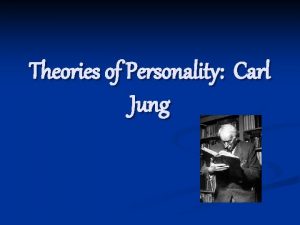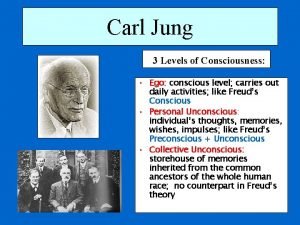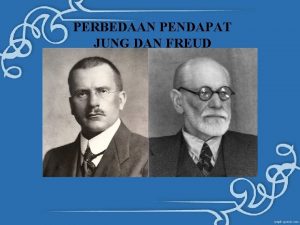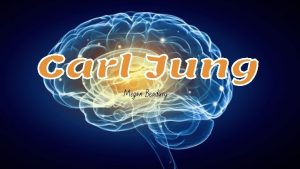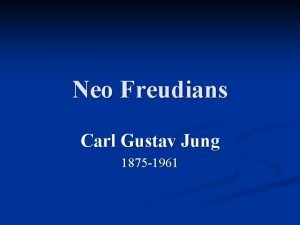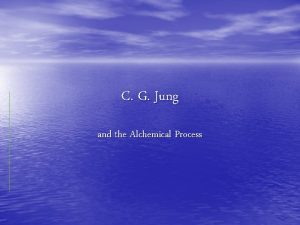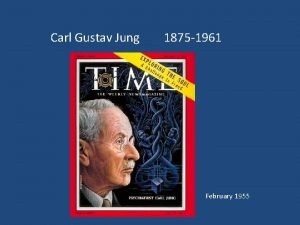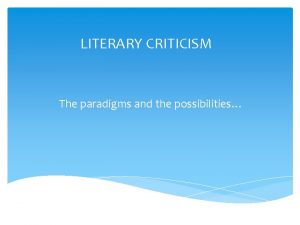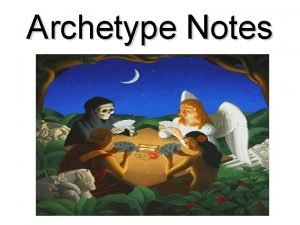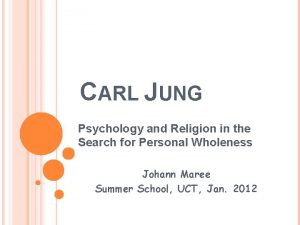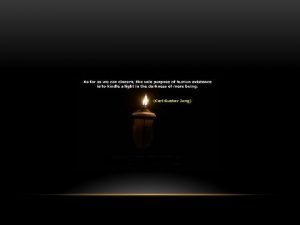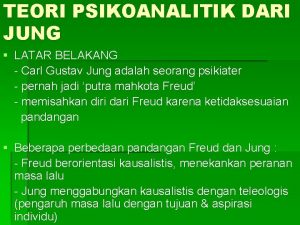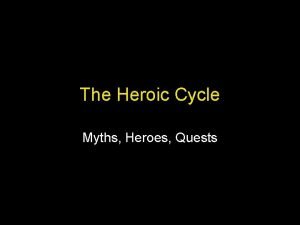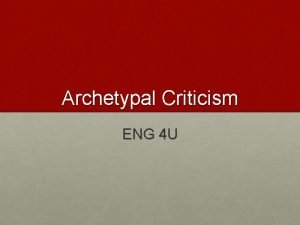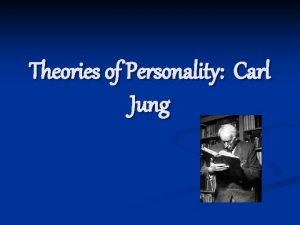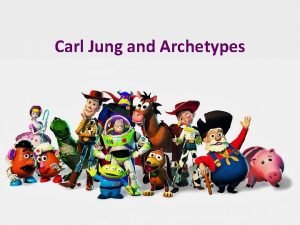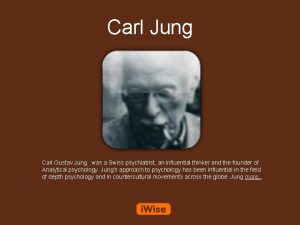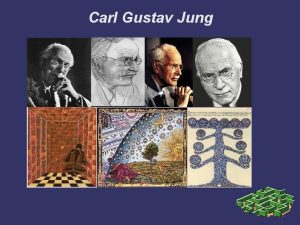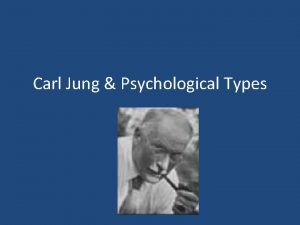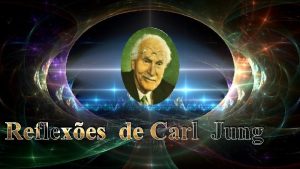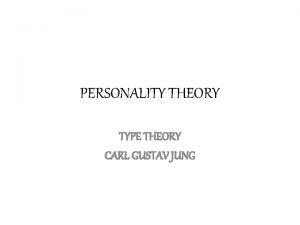Theories of Personality Carl Jung Who was Carl
















- Slides: 16

Theories of Personality: Carl Jung

Who was Carl Jung? n Jung was a colleague of Freud n He was obsessed with the unconscious mind n But, Jung viewed the unconscious mind differently than Freud n Jung saw personality development as lifelong process of striving to reconcile opposite urges

The Theory Jung’s theory divided the human mind into three parts: n The Ego n The Personal Unconscious n The Collective Unconscious

Ego n Jung defines this as the unconscious mind

The Personal Unconscious n n Anything that is not presently conscious, but can be. It includes both memories that are easily brought to mind and those that have been repressed for some reason. What might Freud call this?

The Collective Unconscious n This refers to our “Psychic Inheritance”: n The reservoir of our experiences as a species, a kind of knowledge we are all born with (the collective memories of the entire human race). We are not directly conscious of it but it influences all our experiences and behaviors. n According to Jung, this is who so many cultures have the same symbols recurring in their myths, religion, art, and dreams. The common symbols are referred to as archetypes. n In Freud’s theory… what do we call this?

Archetypes n The content of the collective unconscious are called "Archetypes" n Jung believed humans are not born "clean slates". He thought we came into this world with certain pre-dispositions that cause behavior. n These behaviors were driven by archetypes or archetypal behavior.

Examples of Archetypes n Family Archetypes: n The Father – Stern, Powerful, Controlling n The Mother – Feeding, Nurturing, Soothing n The Child – Birth, Beginnings, Salvation n Story Archetypes: n The Hero – Rescuer, Champion n The Maiden – Purity, Desire n The Wise Old Man – Knowledge, Guidance n The Magician – Mysterious and Powerful n The Witch or Sorceress - Dangerous n The Trickster – Deceiving and Hidden n Animal Archetypes: n The Faithful Dog – Unquestioning Loyalty n The Enduring Horse – Never Giving Up n The Devious Cat – Self Serving

Examples of Archetypes

Examples of Archetypes

Examples of Archetypes

Examples of Archetypes

Introvert and Extrovert n Jung is most famous for his development of the personality types of INTROVERT and EXTROVERT. Introverts are people who prefer their internal world of thoughts, feelings, and dreams. Extroverts prefer the external world of things, other people, and activities.

Myers-Briggs Personality Inventory (MBPI) n MBPI results indicate respondents' likely preferences on four dimensions based upon their placement on these scales: n Extraversion (E) OR Introversion (I) Sensing (S) OR Intuition (N) Thinking (T) OR Feeling (F) Judging (J) OR Perceiving (P) n There are sixteen possible ways to combine the preferences, resulting in sixteen MBTI types: ISTJ, ISTP, ESTJ, ISFP, ESFJ, INFP, ENFJ, INTP, ENTP, and ENTJ.

Myers-Briggs n The rationale is that if employees and supervisors understand the "type" that they are dealing with, they will have a more productive and harmonious workplace.

 Carl jung theory
Carl jung theory Jungian self actualization
Jungian self actualization Freud jung
Freud jung Where was carl jung born
Where was carl jung born The herald archetype examples
The herald archetype examples Trickster character archetype
Trickster character archetype Carl gustav jung teori
Carl gustav jung teori Carl jung alchemy
Carl jung alchemy Mbtitoday.org
Mbtitoday.org Define literary criticism
Define literary criticism Innate wisdom vs. educated stupidity
Innate wisdom vs. educated stupidity Carl jung and religion
Carl jung and religion Robbie scott
Robbie scott Psikoanalitik jung
Psikoanalitik jung Hero carl jung
Hero carl jung Thinking feeling sensation intuition
Thinking feeling sensation intuition Archetypal criticism ppt
Archetypal criticism ppt
